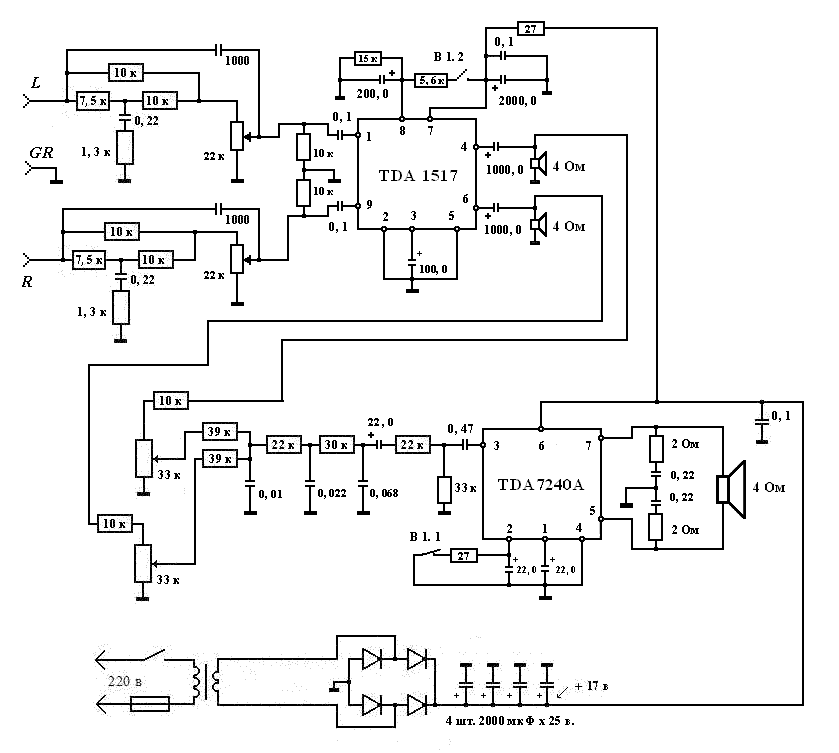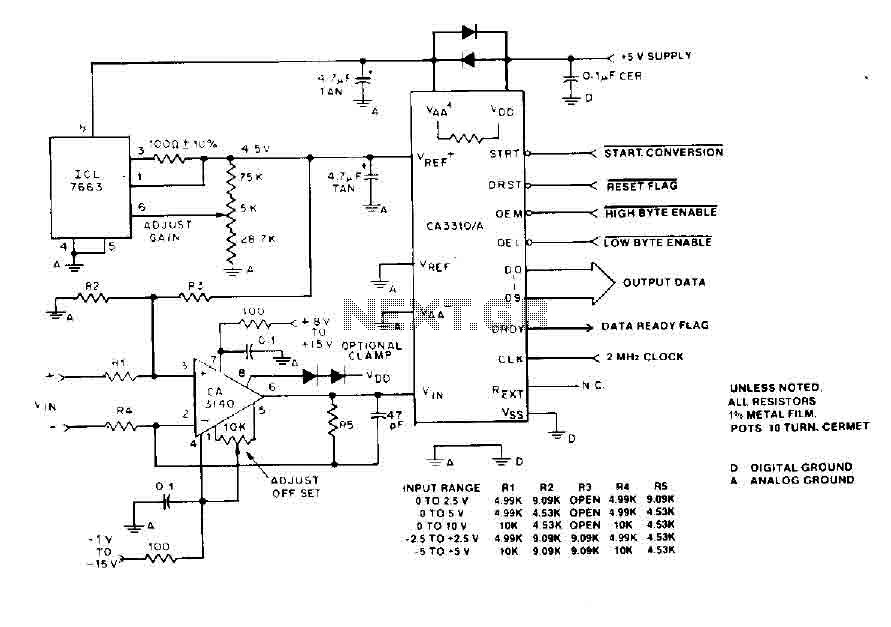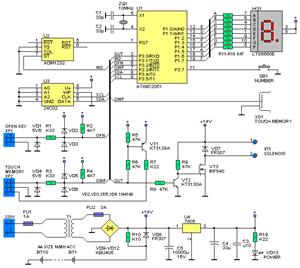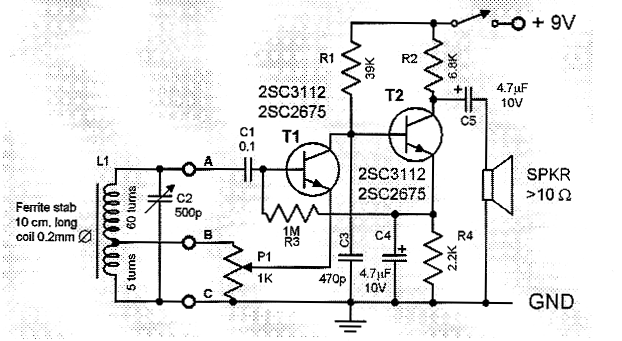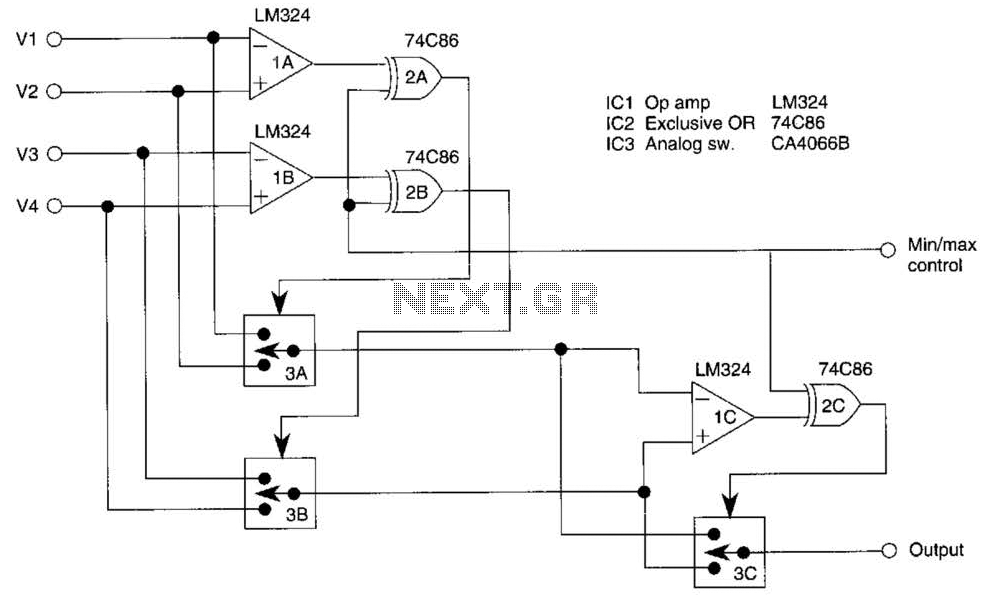
Crystal Activity Tester Circuit

This circuit checks a crystal for activity. Two sections of a 7400 IC act as an oscillator, and its output is rectified to drive an NPN transistor that switches an LED. In an alternative configuration, a meter replaces the LED.
The circuit utilizes two sections of a 7400 NAND gate IC, configured to form a relaxation oscillator. The oscillator generates a square wave signal, which indicates the activity of the crystal under test. The output from the oscillator is fed into a rectifier circuit, typically consisting of a diode, to convert the AC signal into a DC voltage suitable for driving the next stage.
The rectified output is connected to the base of an NPN transistor. When the oscillation is detected, the transistor is turned on, allowing current to flow from the collector to the emitter. This current flow can then illuminate an LED, providing a visual indication of the crystal's activity. The LED serves as a simple yet effective feedback mechanism, allowing for easy monitoring of the crystal's operational status.
In an alternative setup, as indicated in the description, a meter can be used in place of the LED. This configuration allows for more precise measurement of the oscillation amplitude or frequency, providing valuable data for analysis. The meter can be calibrated to display specific values, offering a quantitative assessment of the crystal's performance.
Overall, this circuit is a practical solution for testing crystal oscillators, providing both visual and measurement capabilities depending on the configuration used. The use of a 7400 IC ensures reliability and ease of integration into various electronic applications. This circuit will check a crystal for activity. Two sections of a 7400 act as an oscillator and its output is rectified and drives an npn transistor that switches an LED (Fig. A). In Fig. B, a meter replaces the LED. 🔗 External reference
The circuit utilizes two sections of a 7400 NAND gate IC, configured to form a relaxation oscillator. The oscillator generates a square wave signal, which indicates the activity of the crystal under test. The output from the oscillator is fed into a rectifier circuit, typically consisting of a diode, to convert the AC signal into a DC voltage suitable for driving the next stage.
The rectified output is connected to the base of an NPN transistor. When the oscillation is detected, the transistor is turned on, allowing current to flow from the collector to the emitter. This current flow can then illuminate an LED, providing a visual indication of the crystal's activity. The LED serves as a simple yet effective feedback mechanism, allowing for easy monitoring of the crystal's operational status.
In an alternative setup, as indicated in the description, a meter can be used in place of the LED. This configuration allows for more precise measurement of the oscillation amplitude or frequency, providing valuable data for analysis. The meter can be calibrated to display specific values, offering a quantitative assessment of the crystal's performance.
Overall, this circuit is a practical solution for testing crystal oscillators, providing both visual and measurement capabilities depending on the configuration used. The use of a 7400 IC ensures reliability and ease of integration into various electronic applications. This circuit will check a crystal for activity. Two sections of a 7400 act as an oscillator and its output is rectified and drives an npn transistor that switches an LED (Fig. A). In Fig. B, a meter replaces the LED. 🔗 External reference
